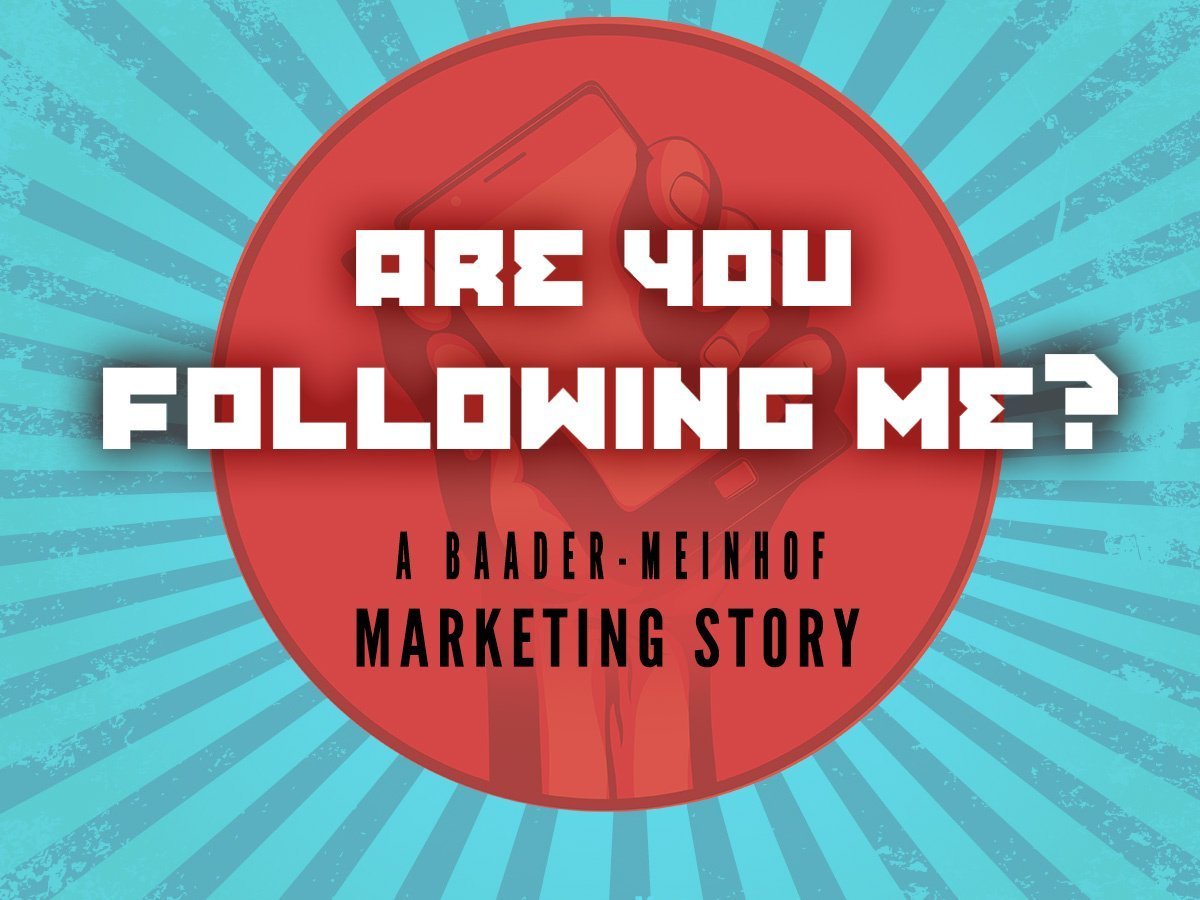Have you ever noticed that certain brands seem to follow you around everywhere, even beyond the computer screen? You happen to see a sponsored post on Facebook, and then an hour later, you notice the same brand advertising on Google. Driving home from work, you happen to drive by a billboard with that SAME brand. As you wind down from your busy day with a little television, you catch a commercial and there’s that brand again.
You start to think, “wait, is this a conspiracy?” The answer is yes and no.
This ‘follow-you-everywhere’ perception is sometimes called the Baader-Meinhof Phenomenon. It is the perception of discovering something new – in this instance, a brand – and then seeming to see it everywhere. You didn’t know it existed, and then all of a sudden it’s an omnipresent part of your life.
Origins
The phenomenon was named in 1994 when a commenter on an online discussion board mentioned that he had heard the name ‘Baader-Meinhof’ twice within a 24-hour period.
The origins of the name itself are strange and unrelated to the phenomenon. Originally, Baader-Meinhof referred to the “Red Army Faction” – an extremist German group in the 1970’s. It just happened to be the thing that someone had recently realized the existence of and started to take note, noticing it more “frequently” than he had before. Somehow, the name stuck.
How it works
In a way, your mind is playing a bit of a trick on you. Yes, you actually are seeing it more frequently than before, but only because your brain is simply now recognizing it. This type of “frequency illusion” can actually be triggered intentionally as part of a marketing strategy.
As Pacific Standard Magazine stated, “Stanford linguistics professor Arnold Zwicky coined the term [frequency illusion] in 2006 to describe the syndrome in which a concept or thing you just found out about suddenly seems to crop up everywhere. It’s caused, he wrote, by two psychological processes.”
The magazine continues by noting, “The first, selective attention, kicks in when you’re struck by a new word, thing, or idea; after that, you unconsciously keep an eye out for it, and as a result find it surprisingly often. The second process, confirmation bias, reassures you that each sighting is further proof of your impression that the thing has gained overnight omnipresence.”
Omnipresence is a great marketing strategy. Studies show that when a brand appears to be everywhere all at once, you’re more likely to think of them the next time you’re in a situation where you may need their product or service.
Phenomenon at work
A great example of this type of business marketing plan can be seen in the seemingly ubiquitous presence of Wealthsimple.
I had a personal Baader-Meinhof moment with this brand because I first saw a blog written by the brand on Twitter, which I retweeted as it applied to a client. Then, I started to notice that their commercials were playing both on TV (Super Bowl, anyone?) and in ads played prior to YouTube videos. I even drove past a billboard with the brand name pasted across it.

I was convinced that the brand was following me. They have sponsored ads running across all of the social networks where I spend a majority of my professional day and once I started to see the name in my personal life, I knew there was something going on.
As it turns out, I am the key demographic for Wealthsimple. Their humorous yet poignant ads are designed with me – a 20-something, educated, American millennial – in mind. (Check out this Fast Company articleabout the brand’s marketing campaign.)
They clearly wanted to be seen, heard, and most of all, remembered. Not only do their ads elicit an emotional response, but they make you think about yourself and your future, which inevitably makes them memorable.
Their impactful messaging and omnipresence forced me to take notice. “This business seems important. I should probably pay attention to what they are saying. Can their service help me?”
Wealthsimple handily applied the Baader-Meinhof Phenomenon to their marketing and it seems to have paid off for them. Applying a blanket branding technique to directly target their desired audience has not only made them memorable, but more approachable.
While Wealthsimple’s omnichannel national campaign may be out of budget for many businesses, if your desired audience is targeted enough, you can implement your own version with just a few elements – say, a targeted Facebook campaign, supported by Google’s remarketing ads, which is then followed by a targeted glossy print mailer.
You Can Do It Too...
In fact, we’re currently coordinating this exact effect for a client. Not only have we established their online marketing presence by creating their website and social channels, we have set-up their SEO strategy and ad campaigns. We are now targeting offline by blanketing specific neighborhoods with their brand and messaging in order to drive sales among a key demographic.
Although a significant amount of planning and strategy is required to successfully implement a Baader-Meinhof style marketing campaign, if you define your audience clearly enough, omnipresence can be achievable for almost anyone. Plus, it certainly keeps things interesting, don’t you think?



 3301 Burke Ave. N, #360 | Seattle, WA 98103
3301 Burke Ave. N, #360 | Seattle, WA 98103